Connected Nations 2019 – 3 Million UK Premises Can Get Full Fibre

Ofcom has today published their Connection Nations 2019 UK digital infrastructure report, which reveals that “full fibre” (FTTP) broadband ISP networks now cover 10% of premises (up from 6% last year) and “ultrafast” (300Mbps+) lines reach 53% (up from 49%). Sadly geographic 4G cover from all operators is unchanged at 66%.
The report itself is intended to provide a general summary of broadband and mobile network availability (as well as performance) from across England, Scotland, Wales and Northern Ireland, although it’s largely based off data that was gathered a few months ago (September 2019).
Sadly the rollout of ultrafast 5G mobile networks has yet to figure into this report because most of those were only just starting to go live at the time when the data for today’s report was being gathered. The deployment of 5G technology by EE, O2, Vodafone and Three UK is expected to take several years and so we’ll be looking toward next year’s report for some solid figures.
Otherwise we’ll split our summary of the key results from this report into categories for fixed line broadband and mobile.
Fixed Line Broadband Coverage
Before we begin it’s important to note how Ofcom defines the different performance classes of broadband. We should add that most of the Government’s older Building Digital UK contracts defined “superfast broadband” by the slower figure of 24Mbps+, although this only represents a difference of around 0.4-0.6% in network coverage vs 30Mbps+. Ofcom’s definition of “ultrafast” is also different from the 100Mbps+ that most others use.
Ofcom’s Definitions of Broadband Performance
Decent Broadband (Universal Service Obligation)
Areas that can access a broadband download speed of 10Mbps+ (Megabits per second) and uploads of 1Mbps+.Superfast Broadband
Areas that can access a download speed of 30Mbps+.Ultrafast Broadband
Areas that can access a download speed of 300Mbps+.Full Fibre
Areas that can access a pure fibre optic (FTTP/H) network right to their home or business, which are usually capable of Gigabit (1000Mbps+) speeds.
Overall the picture is one of gradual improvement, albeit with the most significant changes being seen in “full fibre” coverage (Summary of UK Full Fibre Plans) and much of that is aided by various investment / voucher schemes, relief on business rates for new fibre, regulatory changes and the Government’s future £5bn proposal to bring “gigabit-capable” broadband to every home by the end of 2025 (here).
As a result “full fibre” network coverage has risen from 3% of the UK in 2017, to 6% (1.8 million premises) in 2018 and now stands at 10% (3 million premises). However most of this build is still taking place in urban areas, which tends to overbuild Virgin Media’s existing cable network and hence why “ultrafast” coverage has only seen a leisurely increase from 49% last year to 53% now (i.e. this is still mostly Virgin’s domain).
Meanwhile “superfast broadband” coverage has now reached 95% under Ofcom’s definition (up from 94% last year), which is mostly due to the remaining BDUK contracts. As a result the gap that the 10Mbps+ Universal Service Obligation (USO) needs to fill is also shrinking (0.5% or 155,000 premises) and will continue to reduce before 20th March 2020 (i.e. when the USO comes into force). Assuming all goes to plan then superfast coverage may eventually also creep up to 97-98%.
At this point we note that the figure of 155,000 premises for the USO is a massive change from the 578,000 (c.2%) that Ofcom reported only a few months ago (here). The reason for this is because Ofcom has now factored in the impact of existing fixed wireless broadband and mobile broadband (4G) providers, but if you exclude those (i.e. only look at fixed lines) then the figure rises back up to 610,000 premises.
Most of the USO is expected to be delivered via 4G (EE), with only a little FTTC/P to fill some of the gap. BT has previously estimated that c.100,000 premises may be too costly to be reached by even this obligation.
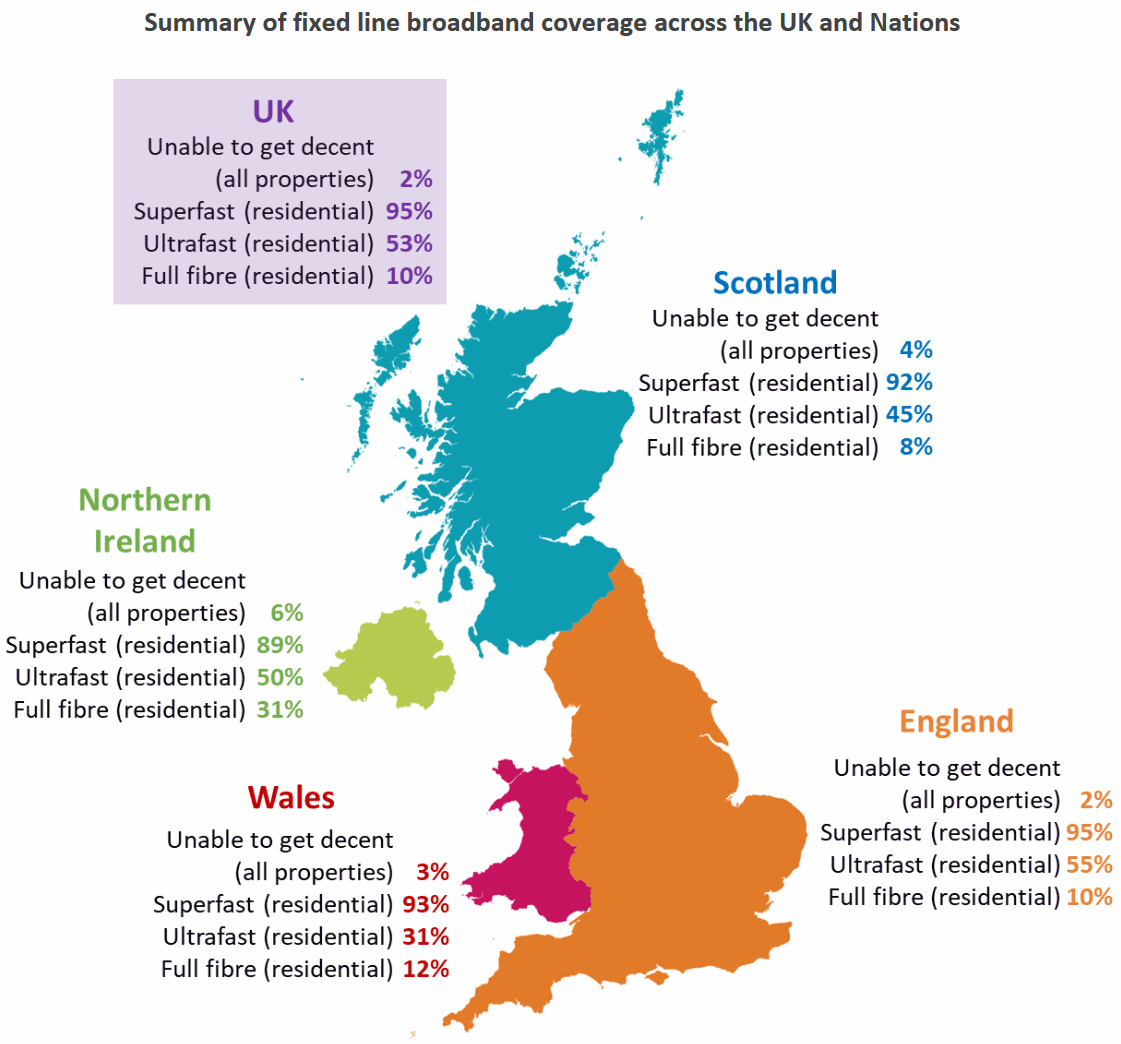
In terms of take-up, some 57% of connections are now “superfast” (up from 45% last year, 38% in 2017 and 31% in 2016) and 71% have adopted a service that can deliver speeds of 10Mbps+. Meanwhile just 5% have taken an “ultrafast” service but if you only look at take-up on “full fibre” networks then this rises to 30%. Despite this a lot of people could upgrade to a faster connection if they wanted.

In addition, the average monthly data volumes per household on fixed broadband connections have also increased over the past year, jumping to 315 GigaBytes (up from 240GB last year). The median value of data use on fixed lines has also increased by almost 30% to 164GB (up from 124GB last year). Users with superfast connections tend to gobble a lot more data too (368GB per month).
Yih-Choung Teh, Ofcom’s Strategy and Research Group Director, said:
“This year we’ve seen full-fibre broadband grow at its fastest ever rate, and all four mobile networks launch 5G.
But despite this good progress, there is more to do to bring all parts of the country up to speed– particularly rural areas. So we’re working with industry and the Government to help bring better services to people who need them.”
Mobile Coverage
The report includes coverage data for mobile networks, such as via the usual 2G, 3G and 4G based platforms that most people should now be familiar with. The UK has four primary network operators (MNO) – O2, Three UK, EE (BT) and Vodafone – plus an assortment of virtual operators (MVNO) that piggyback off those.
Overall Ofcom found that 66% of the UK’s landmass can access a 4G network if you look across all operators, which hasn’t changed much this year (partly due to Ofcom adopting a different methodology). The new £1bn Shared Rural Network (SRN) agreement aims to push from 66% to 95% by the end of 2025 (here).
However the regulator does note that 95% of the UK’s landmass is covered by at least one mobile network for basic mobile coverage, which means one that supports calls and texts (i.e. 2G) but NOT data (i.e. 3G / 4G). Just to clarify, this means that at least one of the four networks is present in 95% – so it is a combined figure, acknowledging that some operators will be in areas that others aren’t.
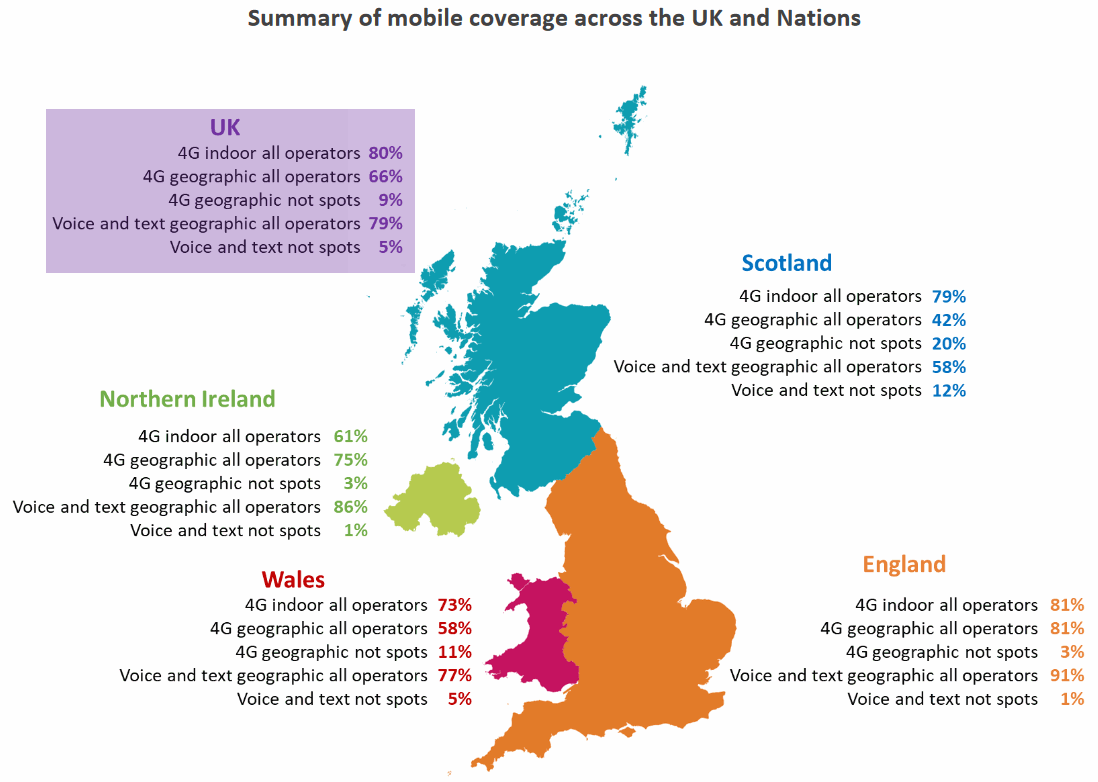
Within this, individual operator coverage varies, with the highest being 84% and the lowest 76%.
4G Geographic UK Coverage by Operator
84% – EE (unchanged from 84%)
80% – Vodafone (up from 79%)
79% – Three UK (up from 78%)
76% – O2 (up from 74%)
Most network operators are currently reaching maturity in their 4G deployments, although EE did previously set itself a goal for landmass coverage of 95% by the end of December 2020 (currently c.91%) but this is likely to have changed as a result of the SRN agreement. Check out the full Connected Nations 2019 report.
International Comparison
Alongside this report Ofcom has also published a brief international comparison, which pits the United Kingdom’s broadband and mobile connectivity against both the EU’s four major economies (France, Germany, Spain and Italy) and 18 other large countries. The data on this front is from 2018 and thus the figures are lower than those reported above (e.g. the UK is on 5% for full fibre coverage rather than 10%).

Overall we do well for 30Mbps+ superfast broadband coverage but are at the bottom for full fibre, although the roll-out is currently going through a rapid ramping-up phase. Personally we think the EU’s own annual Broadband Progress report is better presented and more readable (here).
UPDATE 2:35pm
A comment from the UK Government.
Matt Warman, Minister for Digital and Broadband, said:
“Ofcom’s figures prove that, thanks to government and industry investment, real progress is being made in building a connected, 21st century Britain.
But we’re determined to go further by investing £5 billion to make sure no-one is left without access to gigabit speed broadband, and are close to a £1 billion deal with industry to make poor mobile coverage in rural areas a thing of the past.”
Mark is a professional technology writer, IT consultant and computer engineer from Dorset (England), he also founded ISPreview in 1999 and enjoys analysing the latest telecoms and broadband developments. Find me on X (Twitter), Mastodon, Facebook and Linkedin.
« Gigaclear Legal Challenge Hits Scotland R100 Broadband Project
Openreach’s FTTP Broadband Build Hits 2 Million UK Premises »
Latest UK ISP News
- FTTP (5664)
- BT (3551)
- Politics (2582)
- Openreach (2333)
- Business (2309)
- Building Digital UK (2264)
- FTTC (2056)
- Mobile Broadband (2020)
- Statistics (1818)
- 4G (1707)
- Virgin Media (1659)
- Ofcom Regulation (1488)
- Fibre Optic (1417)
- Wireless Internet (1411)
- FTTH (1382)






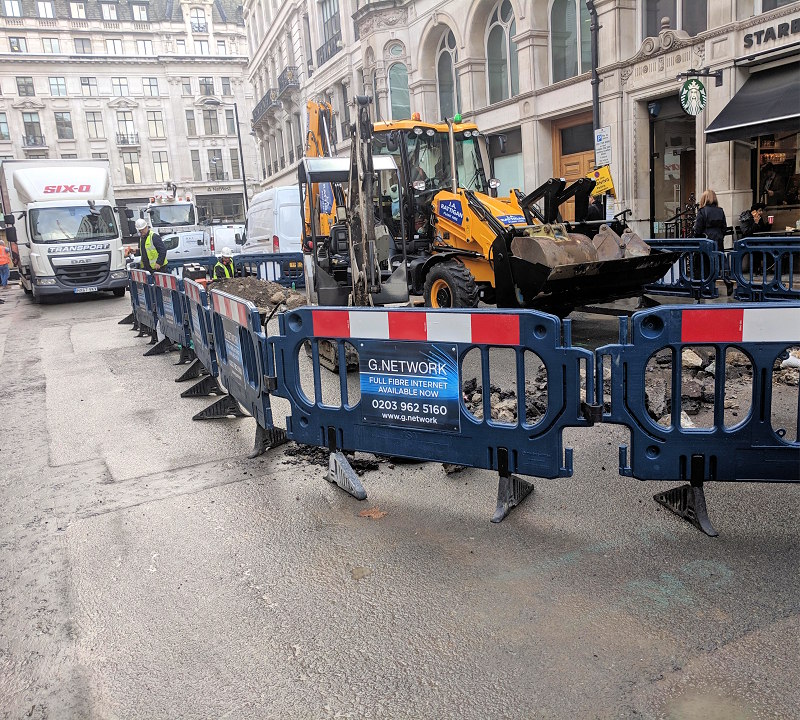















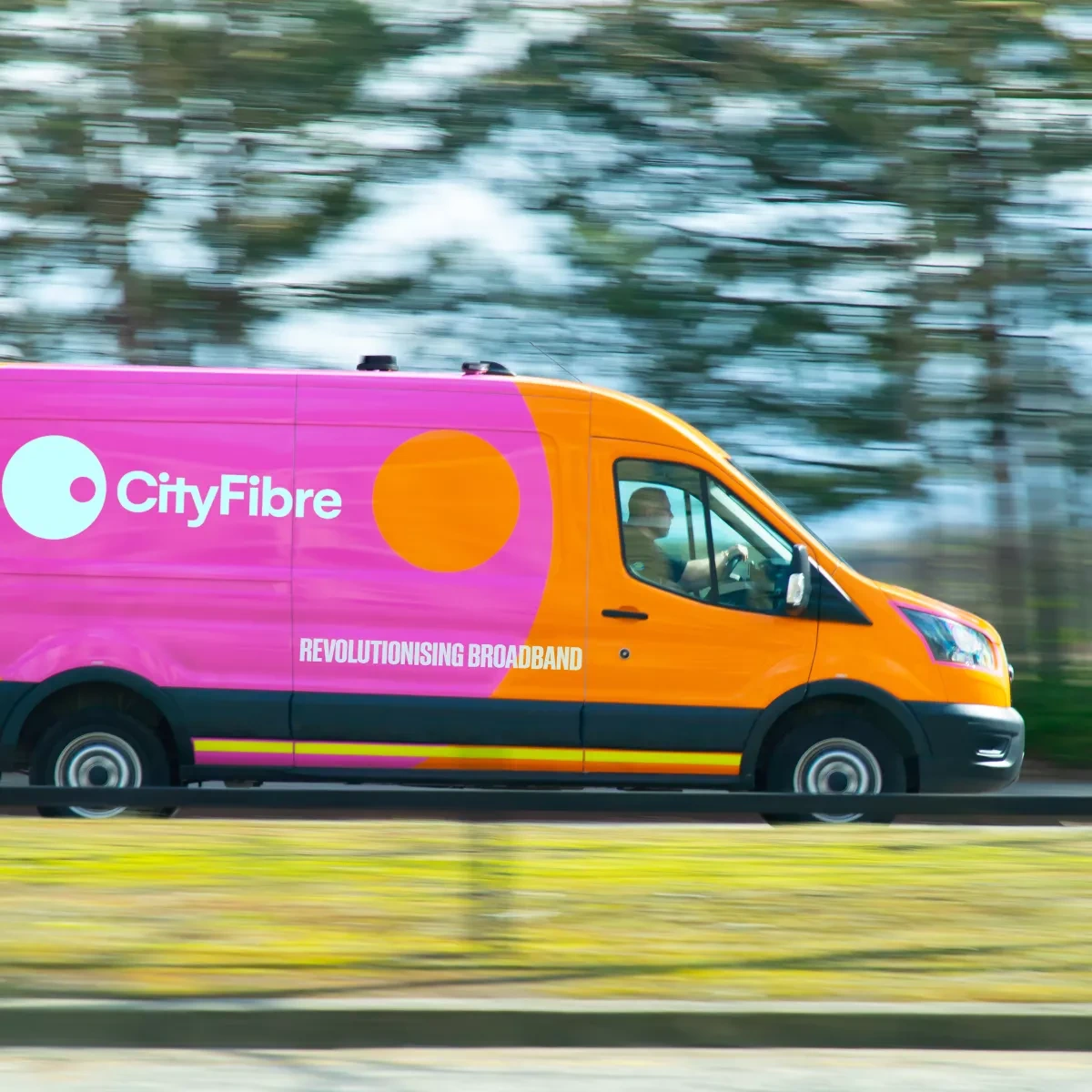














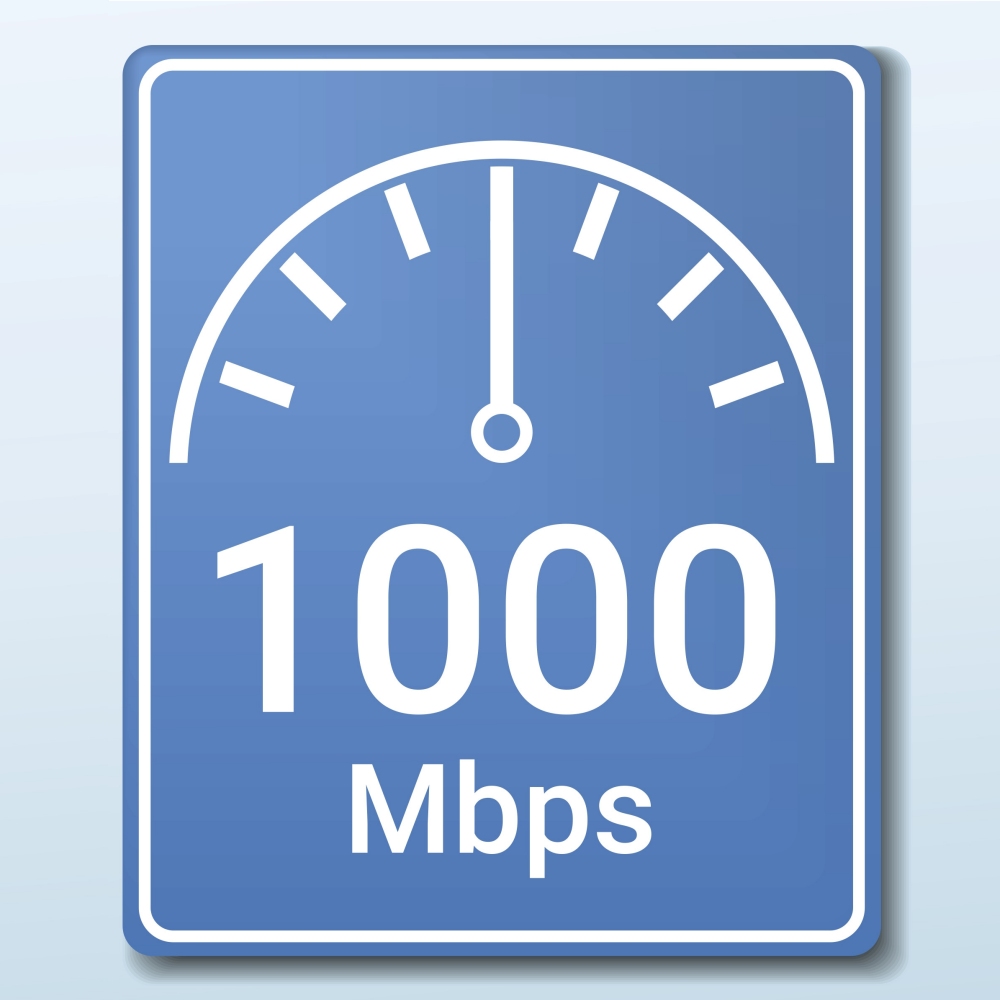
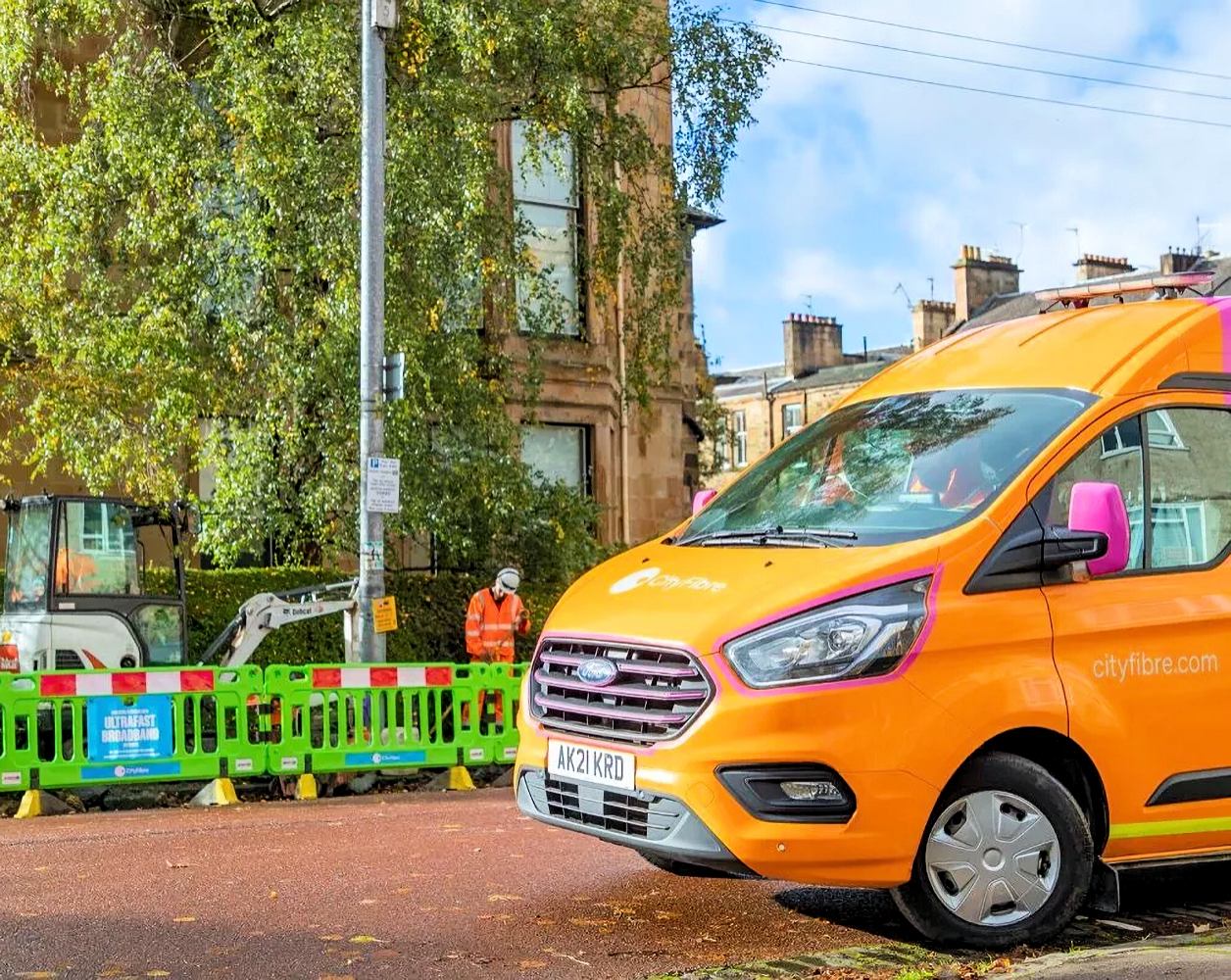


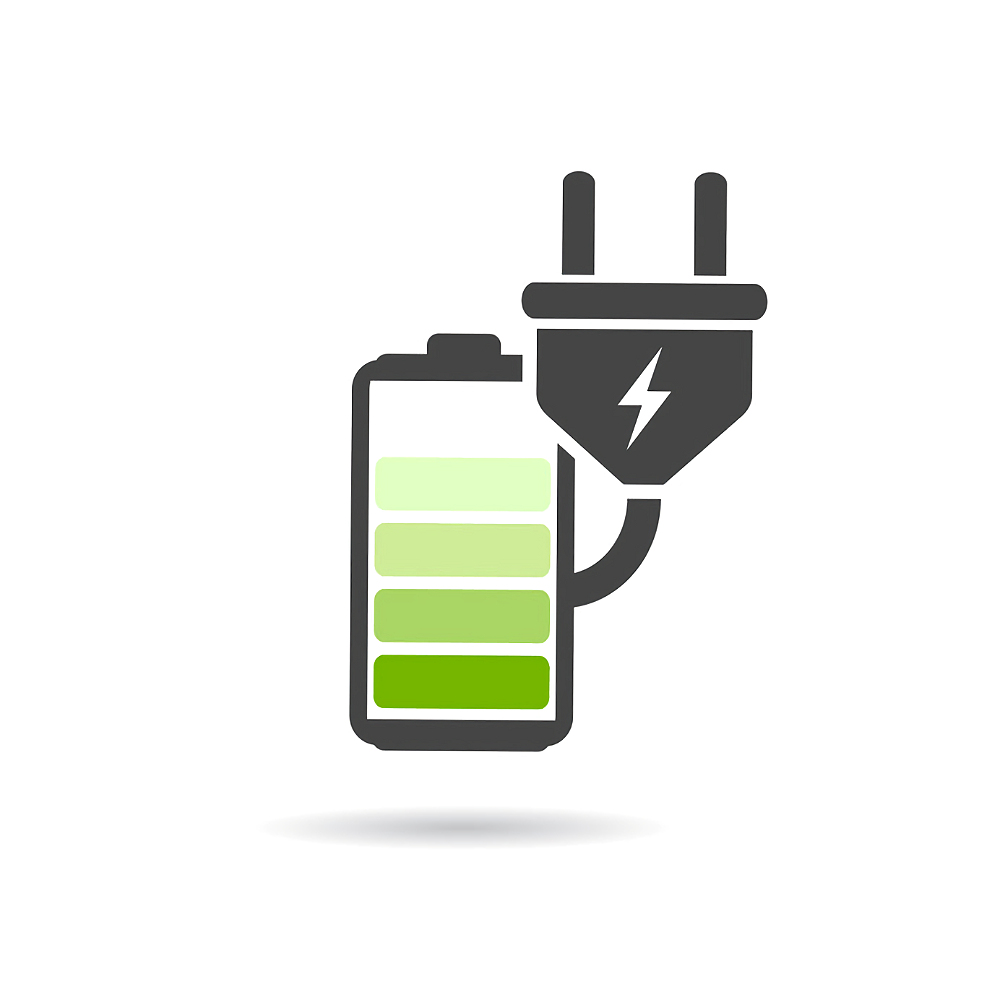


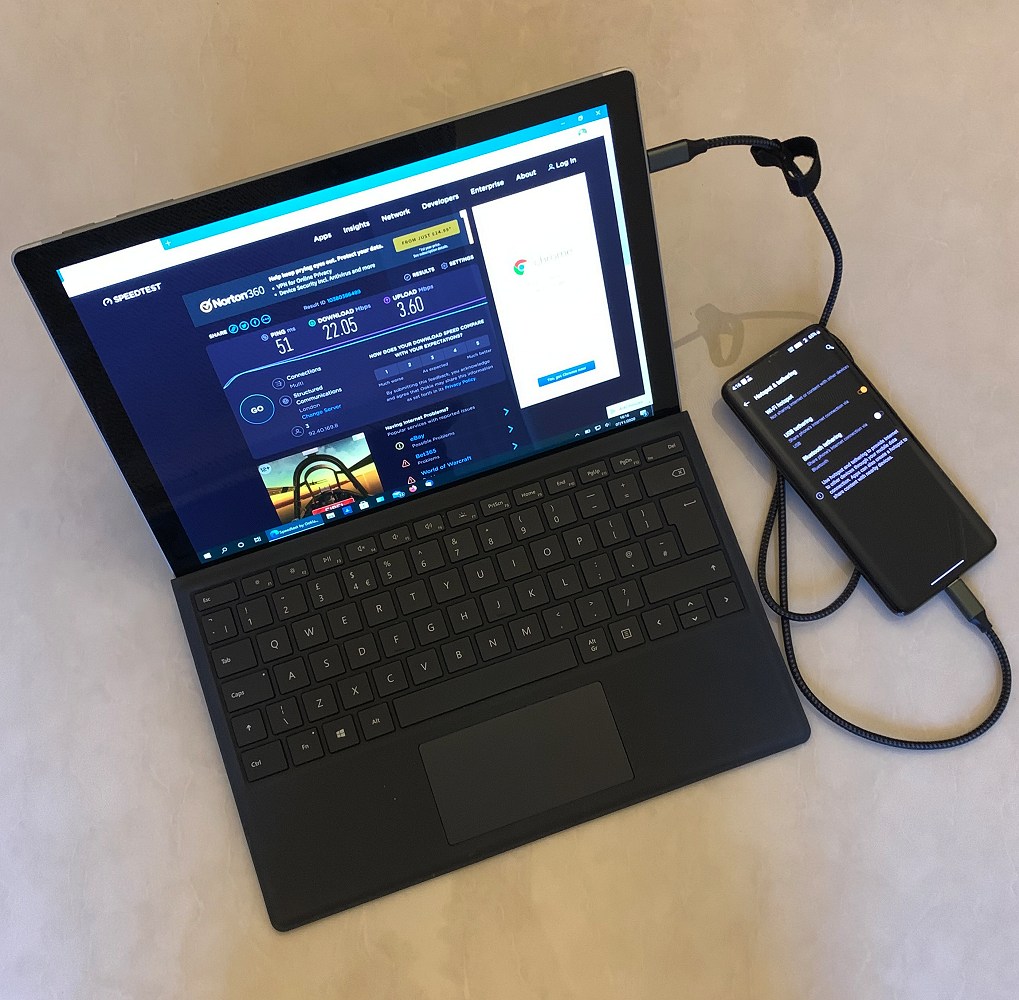

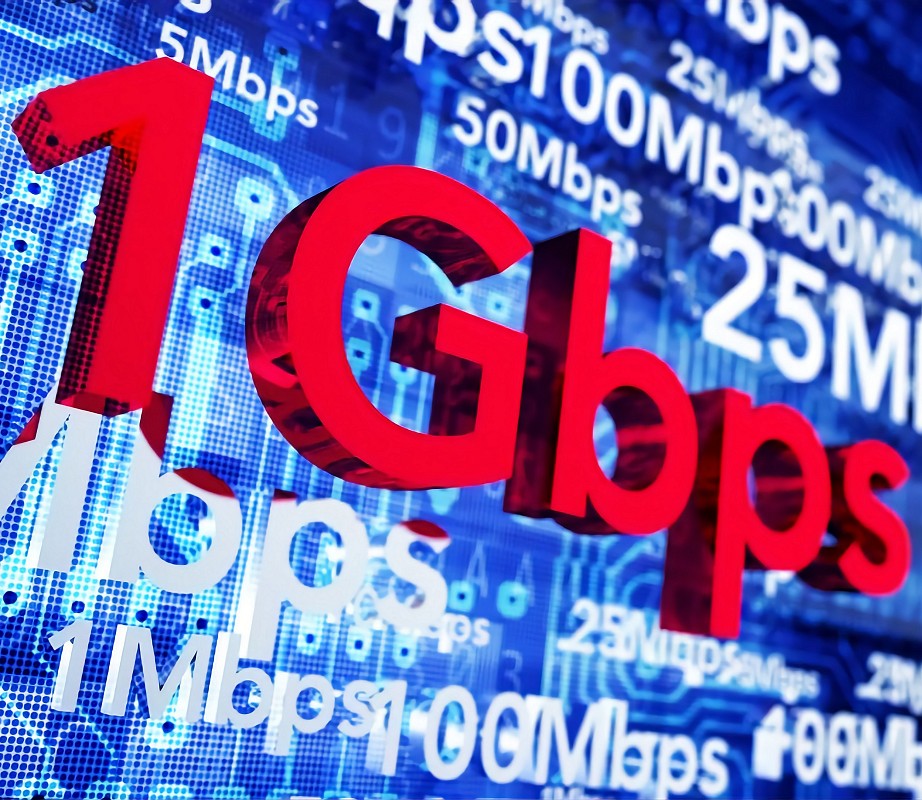
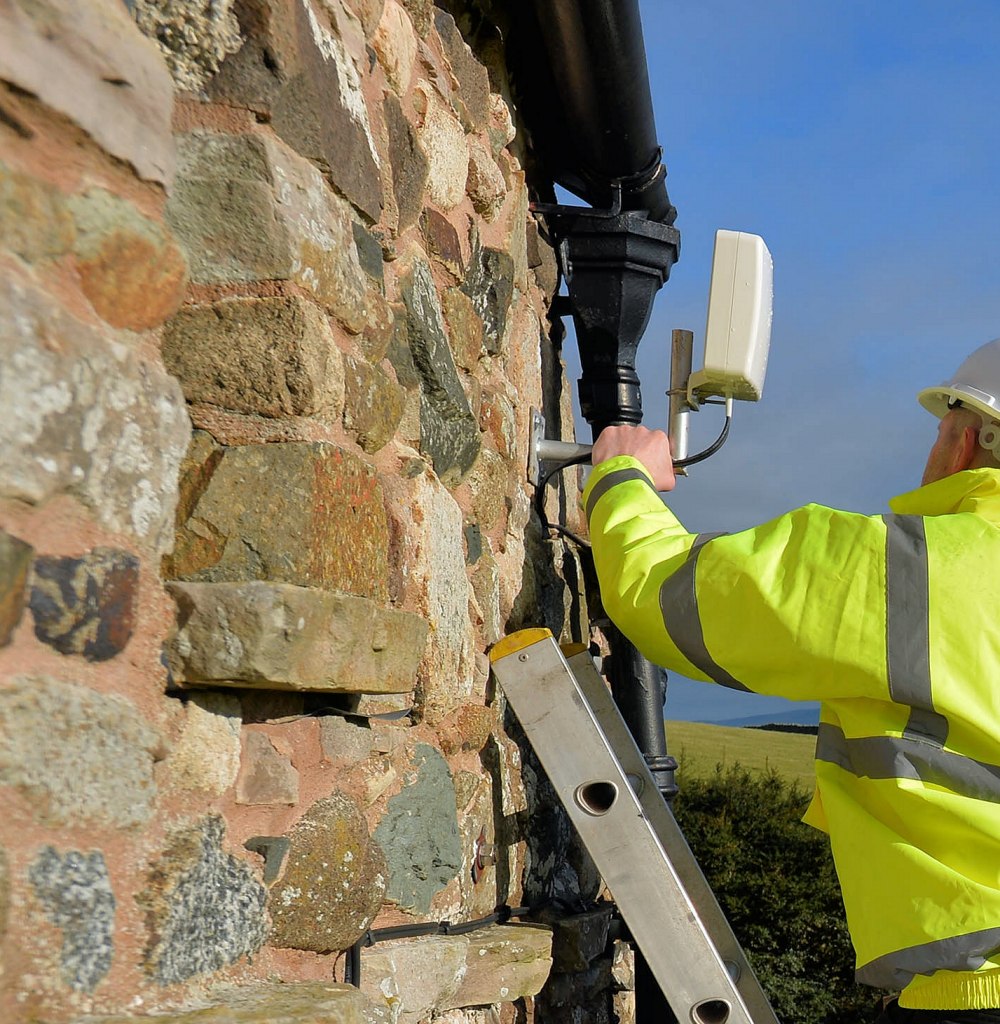
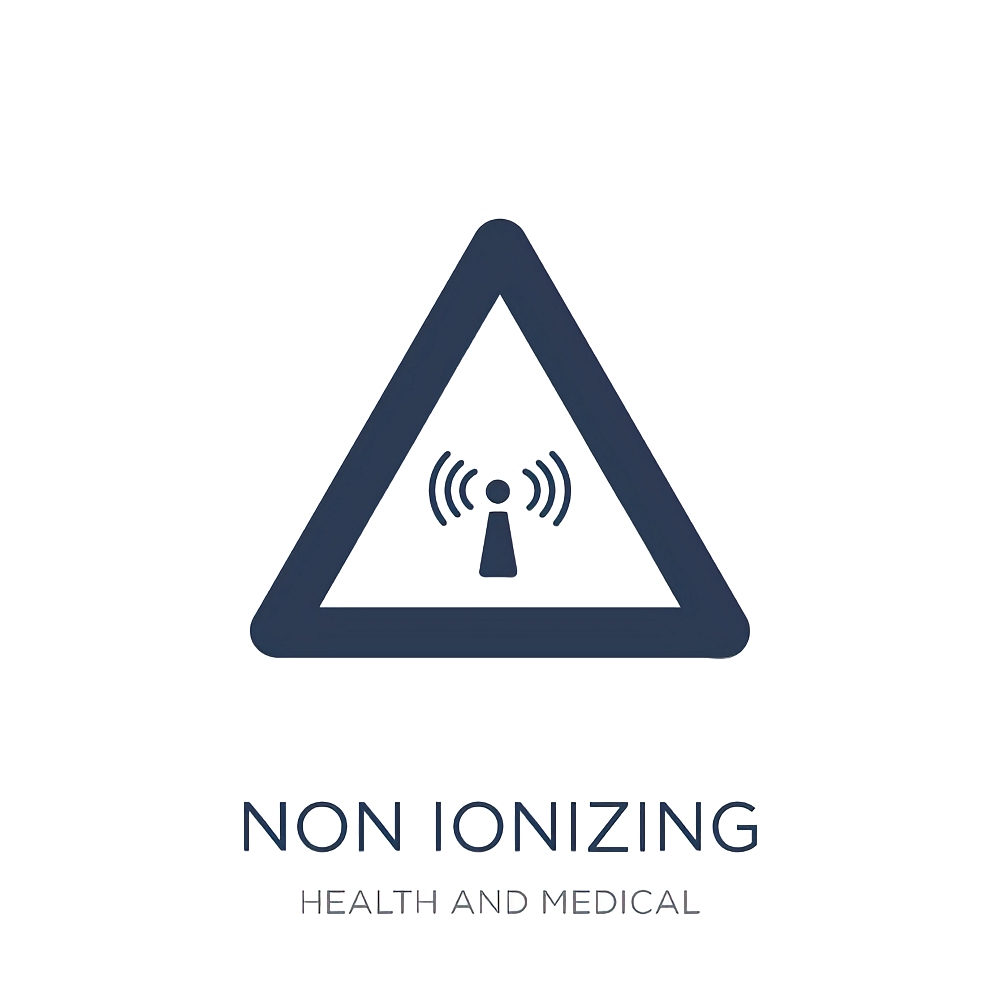





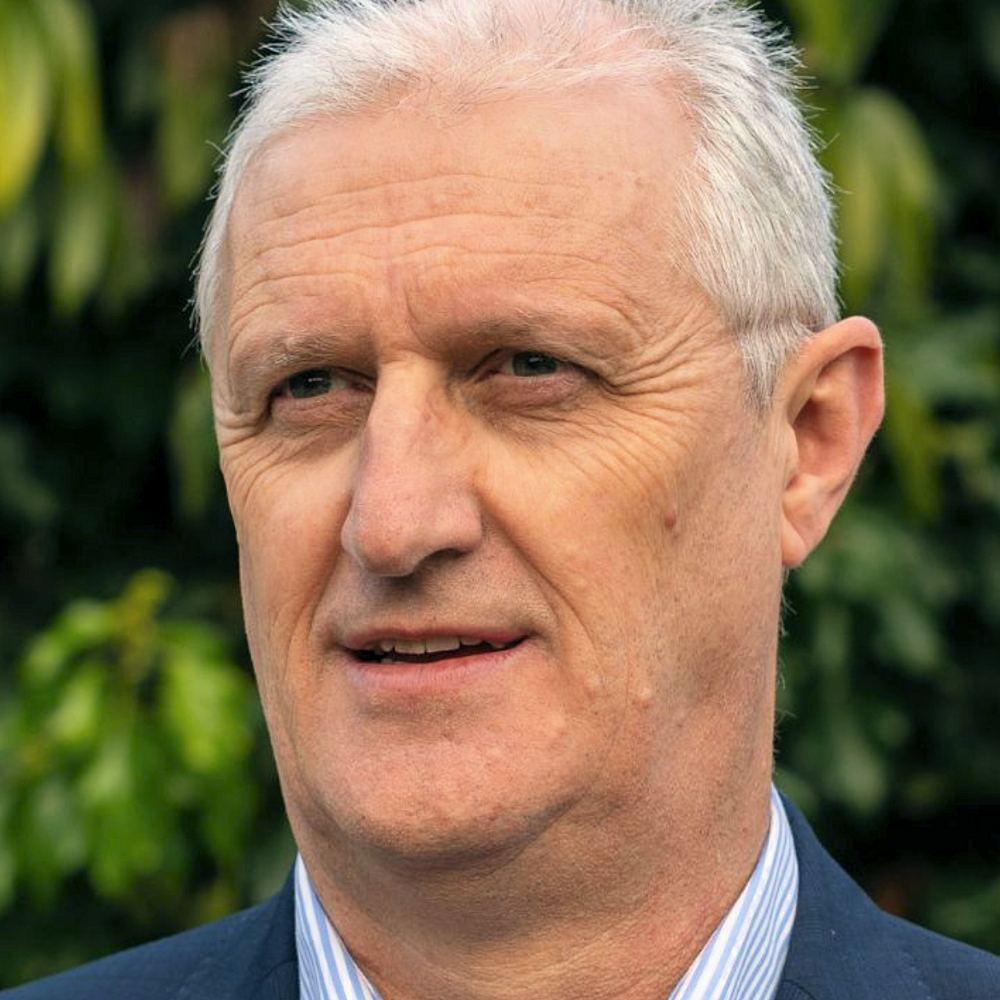

BDUK LDB will need to orchestrate a few English regional procurements to contract another 500k in rural, mostly full fibre. The monies are there.
It is good to see 98% being acknowledged as possible. More might be possible.
That B-USO could be a real nuisance given 4G and antenna can be delivered without the need for specific legislation.
So as always never mind those in urban and suburban areas falling short, then.
They can sit on ADSL and rot for the sake of hundreds a premises while their line rental and taxes subsidise rural areas at a few grand a premises.
Of the “95%” that can apparently now receive a superfast broadband connection, do those figures take in to account premises that can physically receive an FTTC connection but at very low speeds i.e. no better than an ADSL connection? Or is it simply based on premises passed? I suspect the latter, in which case it is very misleading in my opinion.
No, if you were to factor the raw footprint of FTTC/VDSL2 alongside other fixed networks – irrespective of speed – then it would be more like 97-98% today.
Fair enough, so what do they use to calculate the 95% is it the figures that are taken from the BT FTTC checker?
FTTP/H and Ultrafast are BOTH up 4%.
Considering FTTP/H is all Ultrafast capable…
Does that mean the proportion of gfast expansion that can hit +300mbps, Plus all of VMs Lightning expansion is equal to all of the FTTP/H overbuilt on VM cable (not RFoG)?
I know we’re rounding 30million to %, but I’m surprised at how much overbuild that is. I would have expected more ultrafast.
How does OFCOM get its data volumes per household on fixed broadband connections? I know I can get numbers by logging into my TP-LINK router and enabling statistics, but I doubt whether anyone bothers to do this sort of thing. Is it SamKnows kit installed in some homes perhaps?
Ofcom have Samknows kit in homes which may give a clue. Openreach also provide numbers for FTTC/P and I imagine other operators do for their networks too.
Glad to know I’m in the bottom 5% as I can only get 22mb fttc connection. It use to hit 30mb+ so I hope the records used take into account speed changes? I’m still in disbelief it’s so high as I live in a small town not far from a big city – not the middle of nowhere. Am I just unlucky? Can’t get use 4g from any provider but 3 either.
Sounds like you are but the fttp rollout is moving quickly now so you’ll not be that long in a town.